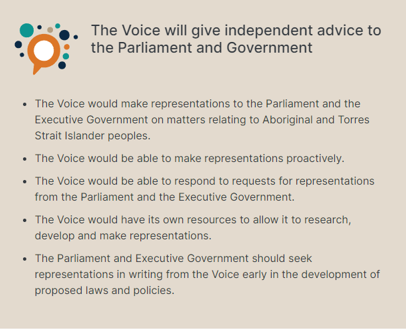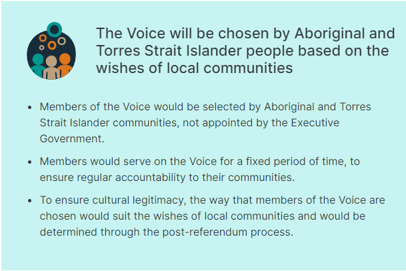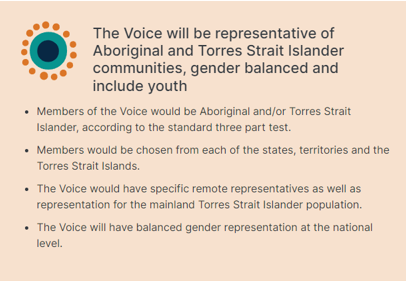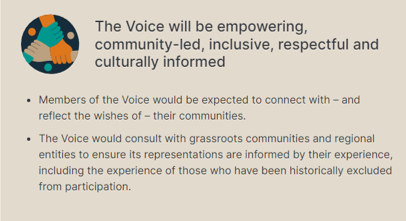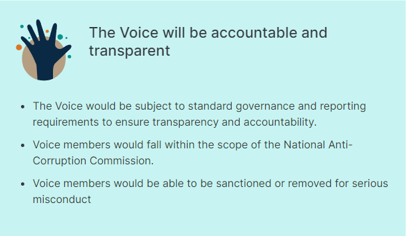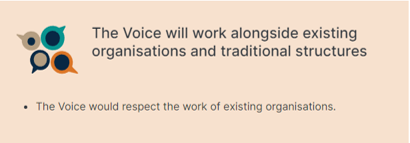Designing the Voice - Principles for Parliament
The Australian Government has committed to establish the Voice in accordance with a set of Design Principles, should the referendum be successful.
The wording of constitutional amendment is very deliberate in granting to Parliament the power to design and implement the Voice. That power is broad – it enables Parliament to make laws relating to:
Parliament may amend or add to these laws as it sees fit (subject to normal democratic parliamentary processes), and with the input of the Voice once it is initially established.
The wording of constitutional amendment is very deliberate in granting to Parliament the power to design and implement the Voice. That power is broad – it enables Parliament to make laws relating to:
- the Voice’s composition, functions, powers and procedures; and
- the way in which the Voice interacts with Parliament and the Executive, and those entities interact with it.
Parliament may amend or add to these laws as it sees fit (subject to normal democratic parliamentary processes), and with the input of the Voice once it is initially established.
It is for Parliament to decide what power the Voice has; what its procedures are, and how it is composed
The Design Principles
The First Nations Referendum Working Group is advising the Government on the referendum. That working group has agreed on a set of design principles of the Aboriginal and Torres Strait Islander Voice. These Design Principles have subsequently been endorsed by the Government, and provide guidance as to how the Voice will look and operate:
Function
Composition
Function
- Design Principle 1: The Voice will give independent advice to the Parliament and Government
Composition
- Design Principle 2: The Voice will be chosen by Aboriginal and Torres Strait Islander people based on the wishes of local communities
- Design Principle 3: The Voice will be representative of Aboriginal and Torres Strait Islander communities, gender balanced and include youth
- Design Principle 4: The Voice will be empowering, community-led, inclusive, respectful and culturally informed
- Design Principle 5: The Voice will be accountable and transparent
- Design Principle 6: The Voice will work alongside existing organisations and traditional structures
EXPLORING the Design Principles
The official Government Voice website contains a useful visualization of the Design Principles:
The Limits of the VOice
The Design Principles also make clear what the voice is NOT:
The Role of Parliament
Ultimately, constitutional amendment proposal makes it clear that it is up to Parliament to determine the final design of the Voice.
These Design Principles, however, provide a significant insight into how the Executive Government intends to design the Bill that will be put to Parliament to legislate. This provides a significant amount of detail for a amendment of this nature.
These Design Principles, however, provide a significant insight into how the Executive Government intends to design the Bill that will be put to Parliament to legislate. This provides a significant amount of detail for a amendment of this nature.
Further Resources
A copy of the Design Principles is available for download here:
| Design Principles for the Aboriginal and Torres Straight Islander Voice | |
| File Size: | 2596 kb |
| File Type: | |

